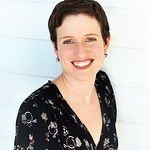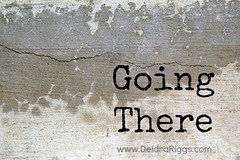The idea for “Going There” came about as a result of the 31 Days In My Brown Skin series I wrote in October, 2012. (You can read those posts here.) The series generated a lot of valuable dialogue, and when the thirty-one days were over, it felt as if the conversation wasn’t done. So, I invite you to share your story as it relates to issues of race, ethnicity, and culture in your every day life.
The goal of “Going There” is to encourage ongoing dialogue about topics of race, ethnicity, and culture in a way that is thoughtful and that shows respect, with the goal of advancing our understanding of the beautiful diversity in the humanity that surrounds us. Interested in sharing your story? Start here. Today’s post is written by Christie.
I am an introvert, and I am white.
I grew up in a technically desegregated, too-often-still segregated south, and whiteness eased my way.
It was my camouflage. My cloak of invisibility. It meant I never stood out in a crowd. Never felt all eyes on me.
I was just part of the scenery, and I took the easiness of that for granted.
Until the day I stood in line for a new driver’s license. This was southside Chicago, an enormous DMV office on Dr. Martin Luther King Jr. Drive. I stood for hours in the lines twisting through that building. The crowds were thick, the rules confusing (this line accepts cash only! This line credit card only!), and I couldn’t stop my eyes from searching, always searching – could I really be the only white person in that whole crowded place?
The weight of that realization – the heaviness of it – surprised me. I couldn’t understand what I was feeling. No matter that I kept telling myself no one noticed me, I felt as if I was standing in the bright hot light of a spotlight. When someone did meet my eye, I imagined the words that floated behind their eyes: “What is she doing here? Did she get lost?”
I was an introvert in a crowd, and I had lost my cloak. I was no longer just a part of the scenery.
During the first few years of my new life in Chicago, I often recalled the African-Americans I had known as an adolescent in Texas. I remembered the one dark-skinned girl who had moved with me through all those high school honors classes. I remembered the African-American friend I had invited to attend a church retreat. “I don’t know,” she had said. “I don’t want to be the only black girl there.” I had reassured her. “We don’t care! No one will even notice!” I’d said.
We don’t care. We won’t notice.
What an awful thing to say. What an awful thing to do. Not notice. Not care.
After the day spent in that DMV, I started to notice. I started to care. I had felt the strangeness, the spotlight burden of being the only one. The different one. The minority.
I had glimpsed, for the first time in my easy life, that racial difference is not only an issue when one faces outright prejudice.
Being different is just hard. Being the only one, rarely feels good.
Especially if you abhor a spotlight.
~~~
 Christie Purifoy is a Jesus-follower, a writer, a wife, and a mother to four. She earned a PhD in English Literature from the University of Chicago and blogs regularly at There is a River, where she finds poetry in the ordinary pain and joy of daily life.
Christie Purifoy is a Jesus-follower, a writer, a wife, and a mother to four. She earned a PhD in English Literature from the University of Chicago and blogs regularly at There is a River, where she finds poetry in the ordinary pain and joy of daily life.
